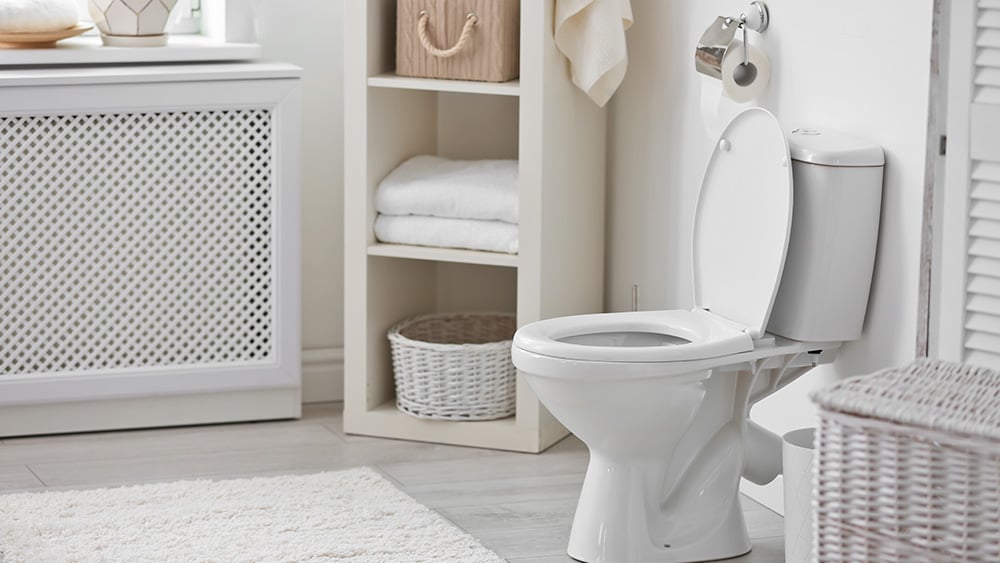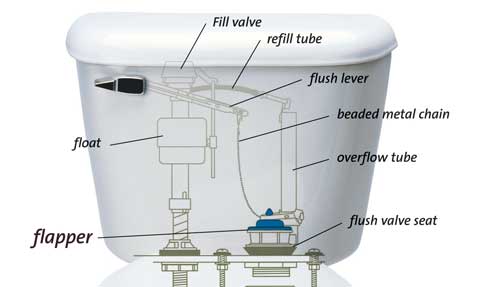
A basic understanding of how toilets work can help you diagnose a number of plumbing issues. Have you ever really thought about how your toilet works or how each part functions? Unless you have had to repair one yourself, it probably hasn’t crossed your mind to learn the inner workings of your toilet. That's why Warner Service has put together this guide to help you understand how your toilet works.
The way a toilet works is fairly simple as long as you understand what the different parts are and what they do. This can be beneficial to you if you ever have a problem with your toilet leaking, running, or flushing improperly. If you understand what’s going on in there, it might be easier to understand what’s causing any issues you might run into.
Knowing how your toilet parts work may help you diagnose a number of problems you could be experiencing with your toilet.
The base of the toilet is attached to the floor with a flange. A wax ring is inserted between the flange and the fixture to create a seal. The toilet is bolted to the flange with closet bolts.
If your toilet is rocking, then what might be wrong? Usually, the issue involves old or ineffective bolts or a worn flange. If it’s leaking at the base, that could mean your seal is no longer working, and you need a new wax ring.
Branching from the tank is a thin pipe (the supply line) that connects your toilet to a water source. At the wall, there should be a shut off valve that will allow you to cut off the water supply to the toilet, in case of an overflow issue.
If your toilet keeps running and you can’t figure out why, you might need a plumber. It’s probably a good idea to turn the water off at the shut off valve so you don’t end up with an outrageous water bill (or worse, a dirty and/or damaged floor). It may keep running for a short time until the water drains from the supply line, but it will stop fairly quickly.
Inside the tank, the parts get a little more complicated. All of the mechanisms that help your toilet flush are located here.

When you flush using the handle, it pulls the trip lever or chain up. At the end of the chain is a part called a flapper. When you flush, the flapper is lifted and the force of the water pulls the water and waste you’re flushing through the trap and into your sewer.
If the handle doesn’t do anything when you push it down, something may have come disconnected or broken in the tank.
Here's a list of terms to study to familiarize yourself with the parts of your toilet:
Flange: a rim used for attaching one object to another.
Wax ring: literally a ring of wax that sits between the flange and the base of the toilet that makes a seal.
Closet bolts: long brass screws that connect the flange to the base of the toilet.
Trip lever: a metal bar connected to your flush handle that is lifted and pulls up the tank ball when you flush.
Flapper: a flat stop at the end of the chain that lifts when the handle is pushed down. This keeps water from constantly flowing into your toilet bowl.
Fill valve: water flows into the tank from the supply line through the fill valve. As the water in the tank rises, a float on the fill valve rises with it. When it gets to the top of the fill valve, the toilet stops filling.
With this information, Warner Service hopes that you will be more confident when you experience toilet issues in your home. If you need extra assistance our residential plumbing services are just a click or call away. 

